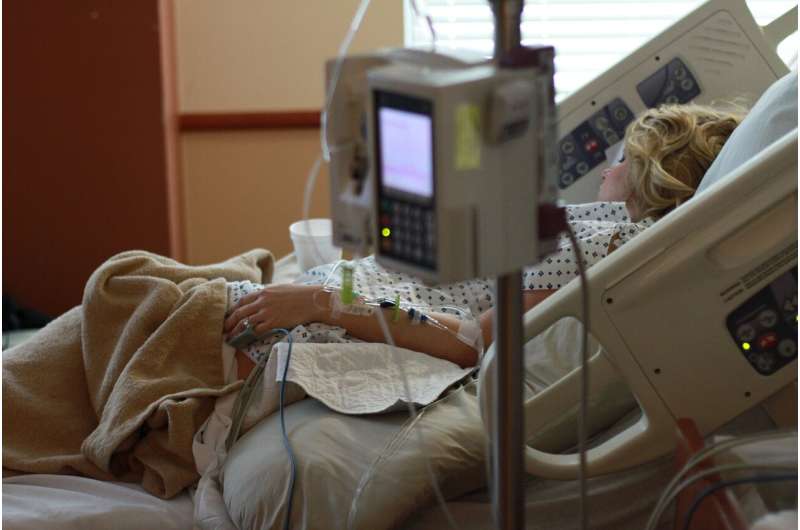Lying prone long enough to improve outcomes is difficult for many COVID-19 patients

Lying face down in a prone position is thought to improve outcomes for patients in intensive care with COVID-19. But a trial published by The BMJ today suggests that many patients cared for in hospital wards with COVID-19 are unable to stay in a prone position long enough to benefit.
The trial (COVID-PRONE) was stopped early when it became clear that sufficient improvements would not be achieved, and the researchers say innovative approaches are needed to encourage patients to adopt a prone position for more than a few hours each day.
Since the 1970s, prone positioning has been standard care for patients with severe acute respiratory distress syndrome as it encourages a larger part of the lung to expand, so patients can take bigger breaths.
Usually, it is done for critically ill patients who are sedated and intubated (breathing through a tube attached to a mechanical ventilator). But in February 2020, reports emerged that prone positioning of awake patients with COVID-19 may also benefit and it was widely adopted.
Since then, several studies have examined its effectiveness in awake patients with COVID-19, but the results have been conflicting.
To try and resolve this uncertainty, a team of Canadian and US researchers set out to assess the effectiveness of prone positioning to reduce the risk of death or respiratory failure in patients admitted to hospital with COVID-19.
Their findings are based on 248 awake patients with COVID-19 admitted to 15 hospitals in Canada and the US from May 2020 until May 2021. These patients were not critically ill but needed supplemental oxygen. Their average age was 56 years and 36% were female.
Patients were randomly assigned to either prone positioning or standard care (no instruction to adopt prone position). Patients in the prone arm were advised to adopt a prone position for up to two hours four times a day, and encouraged to sleep in a prone position at night for up to seven days, with repeated efforts by staff to try to improve adherence.
The results show that the average time spent prone in the first 72 hours was around 2.5 hours per day in the prone arm compared with 0 hours per day in the control arm. Discomfort was the main reason reported by patients for their low adherence to prone positioning.
After taking account of other potentially influential factors, risk of death, mechanical ventilation, or worsening respiratory failure was similar between the prone group (18 events) and the standard care group (17 events).
The difference in the ratio of oxygen saturation to fraction of inspired oxygen (an indication of how well the lungs are transferring oxygen to the blood) after 72 hours was also similar between the two groups.
This was a well-designed trial that assessed both clinical and physiological outcomes, and the results reflect the effectiveness of real world interventions to encourage prone positioning in similar healthcare settings, explain the authors.
But they acknowledge some limitations, the most important being poor adherence to time spent prone, which they say "highlights that it is generally not well tolerated and innovative approaches are needed to improve adherence."
And while they can't definitively rule out benefit or harm, they say their results confirm that "simply instructing patients to lie prone and providing them with reminders is insufficient for most patients to spend a prolonged period in the prone position."
Future studies are needed to determine whether a greater amount of time spent in the prone position is associated with clinical benefit, they conclude.
This new trial, together with previous trials, "shows that both duration and timing of awake prone positioning are important determinants of its efficacy in patients with COVID-19," say UK researchers in a linked editorial.
"Future studies must focus on finding optimal means of maintaining awake prone positioning in the care of severe, likely late stage COVID-19," they add, while patient and public involvement "will be crucial to ensure that appropriate attention is paid to comfort and acceptability in the design and evaluation of complex interventions to enable awake prone positioning."
More information: Prone positioning of patients with moderate hypoxaemia due to COVID-19: multicentre pragmatic randomised trial (COVID-PRONE), BMJ (2022). DOI: 10.1136/bmj‑2021‑068585




















